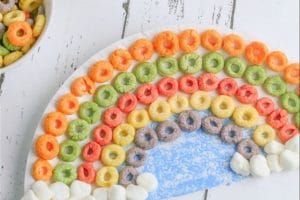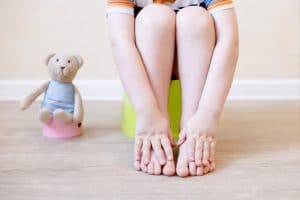Expert tips by Jan Jones (Early Childhood Educator)
Picture a non-walking baby or a newly walking toddler. Everything around them on floor level is at close range. Everything that is at eye level for an adult is ‘out of sight’ for babies and toddlers. Babies and toddlers ‘inhabit the floor’.
Try crawling around the floor to see what this habitat looks, feels and smells like. You’ll feel a bit silly, but you can make some interesting discoveries. The undersides of furniture become visible from this perspective. A highchair could be a climbing frame. A wall is totally blank at this level. Drawers and low shelves are places to get into and empty out.
Here are some play space ideas for you to try to cater for this age group.
Dangle centre
Tie a rope across the legs of a table. Tie various objects securely to the rope: a stuffed toy, a plastic bottle with rice in it, a tea towel or scarf, etc. Place a non-mobile baby on a rug underneath.
Purpose: to allow the baby to practise reaching, grasping, batting and kicking.
Drop centre
Use some ribbon or string and tie light toys on the tray of a highchair (heavy toys may unbalance the chair). When the child drops them overboard she/he can learn to retrieve them by pulling up the string. She/he can see where the toys have gone when they disappear.
Purpose: to encourage the baby to practise thinking about things and whether they still exist when they are out of sight (this is called object permanence). Allows child to practise problem solving skills. (How do I get this toy back up here?)
Hauling centre
Create or collect containers that a small child can manage themselves, like small baskets with handles, shoulder bags, a shoebox with a cord attached for pulling. Set up an area with these containers and some small things to put into them (stuffed animals, small blocks, etc.). Children this age love to take things from place to place and tip them out.
Purpose: To practise walking with a ‘load’. To build a sense of accomplishment and an ‘I can do it” attitude.
Sound centre
Collect wind-chimes, cake tins, wooden spoons, rice shakers and anything else you can find that is safe and will make an interesting noise. Hang them from the branches of a low tree or on a fence. Put a soft blanket underneath to encourage children to sit and experiment with sound.
Purpose: To explore the way different things sound. To encourage the child to notice that what they do has an effect (cause and effect).
Surprise centre
Save a large cardboard box (such as a refrigerator or television carton). Cut an entry hole just big enough for a child to crawl in. Cut other holes to let light in but make the biggest hole in the roof. Every tome the box is moved the child will get a new view through the ‘sky light’. You will have a lot of peek-a-boo games happening with this box too.
Purpose: To encourage child to explore the world through looking.
Feely centre
Get another large cardboard box (or use the same one) and put a soft rug on its floor. Stick some things on the inside walls of the box that have interesting textures: sand paper, velvet cloth, bubble wrap, corduroy, foam rubber, corrugated cardboard, etc. You could also include a shoe box full of interesting objects to feel.
Purpose: To encourage the child to explore through the sense of touch.
Mini art centre
Find a corner of a room that isn’t used very much. Set up a mini art gallery at baby and toddler level. Screw a large picture frame to each side of the wall. Take out the glass and use a sheet of perspex as the front of the frame. Put in different things each week; photos of the child at play, pastings the child has made, pictures from magazines of things your child likes to talk about. If you would prefer not to attach the frames to walls, use the inside of a cupboard door or the back of some furniture to set up the picture frames.
Purpose: To encourage the child to look closely, to recall previous play experiences and to encourage language development.
You can use your own imagination and come up with lots of exciting play centres for babies and toddlers to explore. Remember, everything in the world is new when you are this age so don’t be afraid to use everyday objects. Just make sure they can be safely put into the child’s mouth as most children will experiment with taste of objects that are new to them. Attachments must also be very secure so that child can’t become entangled or remove objects that you feel should stay attached.
Try to spend as much time as possible playing with your child at any of these activities as the most important play object for a young child is someone to talk to them and expand on their enjoyment.
Do you get down on the floor with your baby? What activities do you do?














